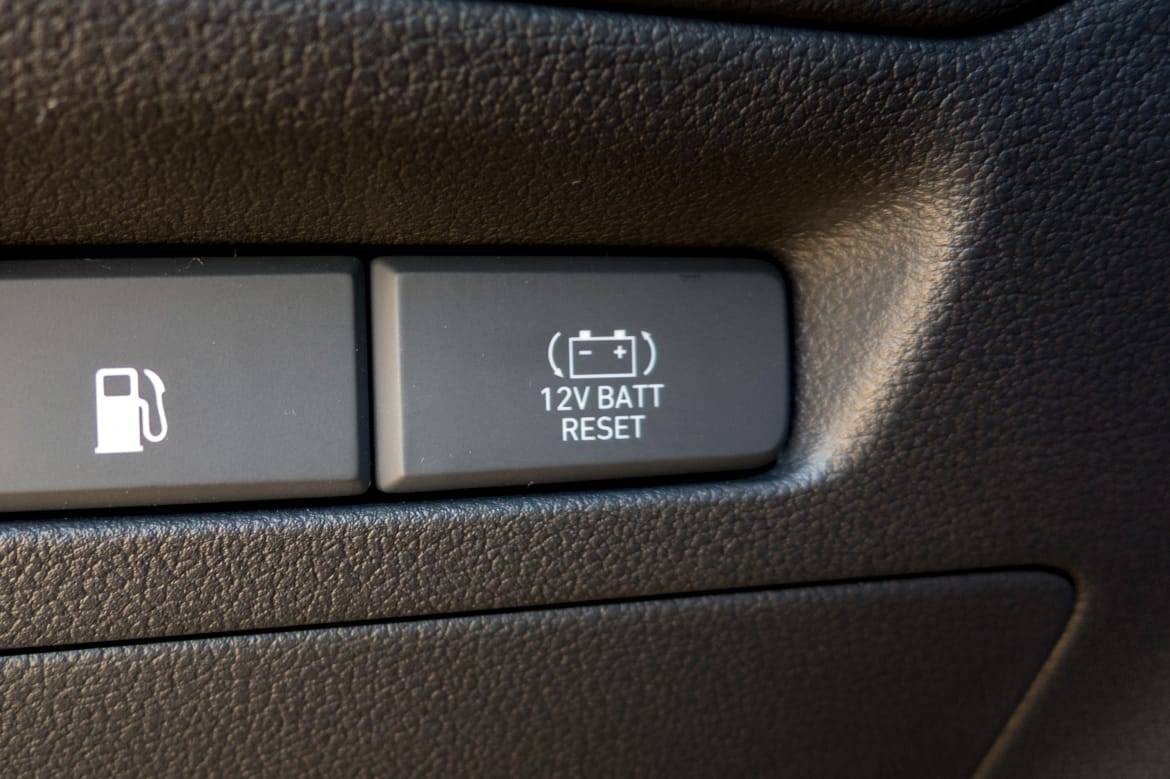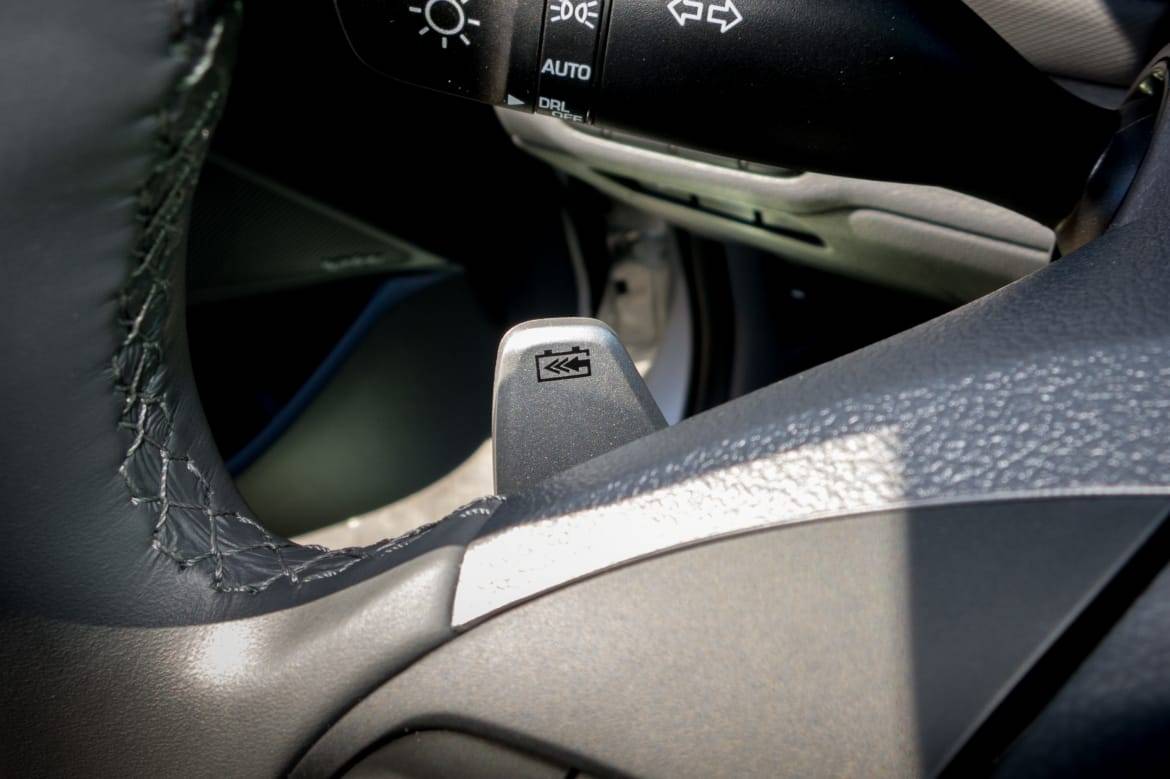2017 Hyundai Ioniq: What Does This Button Do?


CARS.COM — We just tested the new 2017 Hyundai Ioniq Hybrid and Hyundai Ioniq Electric, the automaker’s answer to the Toyota Prius’ dominance of the fuel-efficient small-car category, and while the experience was about as pleasant as driving a hybrid hatchback can be, there were a couple of features in the new Hyundai Ioniq and Hyundai Ioniq Electric that caught our eye — and a couple of buttons that we wondered about.
Related: 2017 Hyundai Ioniq Hybrid and Electric Review: First Drive
Check these out:
Regenerative Brake Level Control Paddles


On most cars, the paddles behind the steering wheel operate the transmission, allowing you to manually shift the gears in your automatic to make you feel like you’re driving something sporty. Some high-performance cars have a dual-clutch transmission in which this makes sense, but most cars that feature it do so simply because customers complain when it’s not there (does a Ford Explorer Sport really need paddle shifters?). Hyundai decided to change that up in the Ioniq, though.
In the Ioniq Electric, these don’t work the transmission; rather, they change the strength of the regenerative braking system. There are four degrees of severity, allowing for “one-pedal driving” as fans of electric vehicles call it. Set it to zero, and the car rolls freely with almost no regen slowing you down when you lift your foot off the accelerator pedal. Set it to three, and the car slows immediately as soon as you lift your foot, allowing the battery to recapture the most electricity without you needing to touch the brakes much.
We’ve seen cars with a button or transmission setting that will switch from regular to aggressive regen, but this is the first instance we’ve seen of an electric vehicle that lets you set a varying degree of regen braking.
Battery Charge Button

The 12-volt car battery that sits under the hood of nearly every new vehicle hasn’t changed much in the last 40 years. It’s still lead-acid, it still goes dead if you leave something on or don’t drive the car for an extended period. Hyundai has changed all that in the Ioniq Hybrid. The model-year 2017 Ioniq Hybrid’s 12-volt battery is instead integrated into the car’s lithium-ion hybrid battery pack, the big one that stores electricity for the Ioniq’s electric motors.
If you should accidentally leave a light on or something plugged in and the battery gets drained, there’s no need for a jump-start. Just push this button and the car’s big onboard battery pack will quick charge the 12-volt portion of the battery so you can fire up the electric motor. No more calling AAA for a jump or dragging out jumper cables and hoping for a kind Samaritan to help you, and no replacing the heavy 12-volt battery every couple of years.
When you’re in the market for a fuel-efficient small car or an electric car, don’t overlook Hyundai in favor of a Tesla, Toyota, Nissan Leaf, VW E-Golf, or Chevrolet Bolt. The Hyundai Ioniq and Hyundai Ioniq Electric are both solid options that provide excellent performance in a stylish package.
Cars.com’s Editorial department is your source for automotive news and reviews. In line with Cars.com’s long-standing ethics policy, editors and reviewers don’t accept gifts or free trips from automakers. The Editorial department is independent of Cars.com’s advertising, sales and sponsored content departments.

Detroit Bureau Chief Aaron Bragman has had over 25 years of experience in the auto industry as a journalist, analyst, purchasing agent and program manager. Bragman grew up around his father’s classic Triumph sports cars (which were all sold and gone when he turned 16, much to his frustration) and comes from a Detroit family where cars put food on tables as much as smiles on faces. Today, he’s a member of the Automotive Press Association and the Midwest Automotive Media Association. His pronouns are he/him, but his adjectives are fat/sassy.
Featured stories



